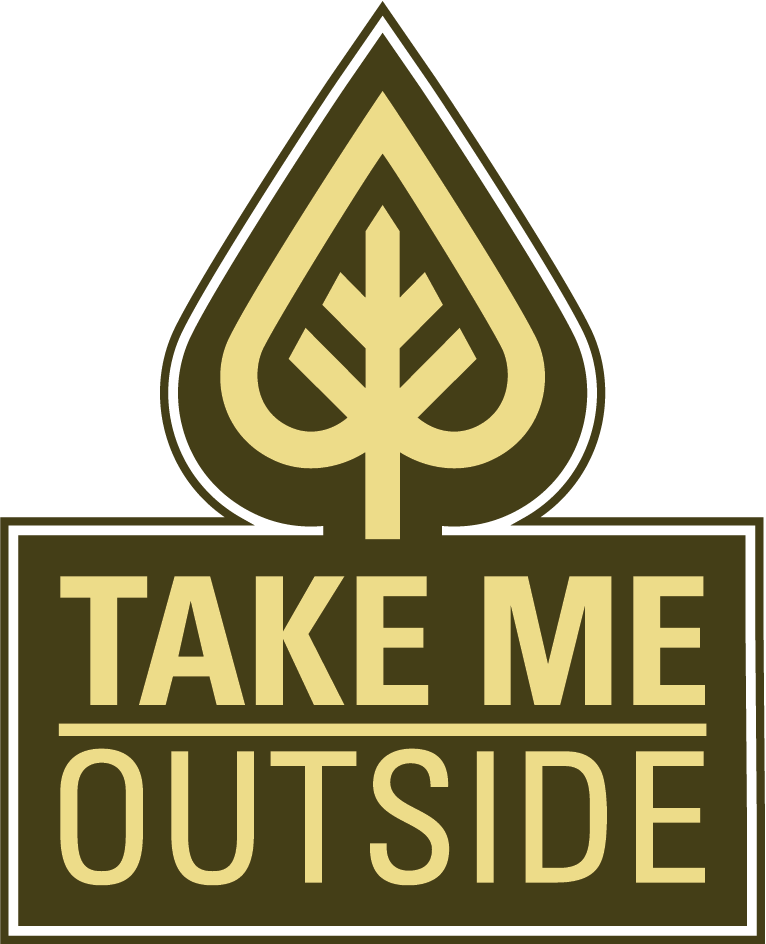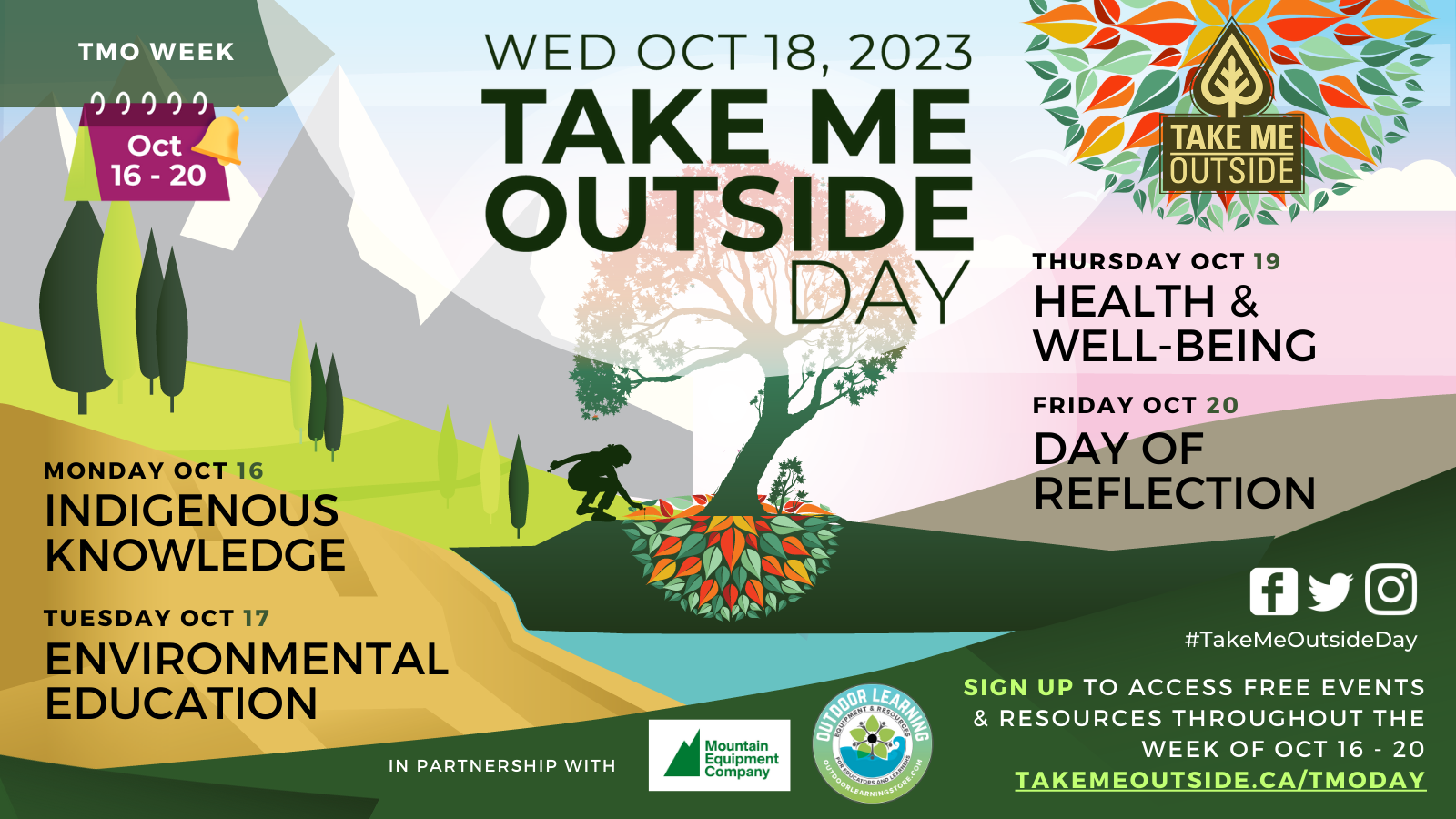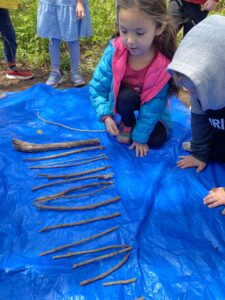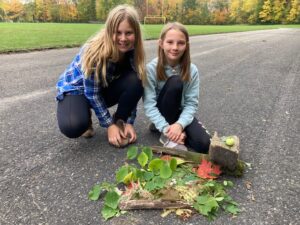TMO Day 2023: Climate Change & Environmental Education
Enjoy these activities for Take Me Outside Day and week, or any other day of the year! Please feel free to share widely, and reach out if you know of an activity or resource that should be added to the list. Then head outside!
Tuesday October 17 – Theme: Climate Change & Environmental Education
Get to Know Your Local Ecosystem
Subjects: Phys Ed, Language, Social Studies
Teaching Strategies: Critical thinking, Place based learning, Collaborative learning
Check out this resource from Ever Active! Your learners will love exploring local natural spaces and sharing their gratitude writing letters to the land.
Grade: 6-12
Subjects: Science, Language
Teaching Strategies: Citizen science, experiential learning
This detailed Pollinator Resource Package from Green Teacher shares great readings and also 3 awesome lessons that engage students on menu planning with pollinated food, learning about squash bee and human dependance, and bumble bee observations. Have fun getting your students outside and connected with their local BEEautiful pollinators!
Paws, Hooves, Feet
Grade: K-4
Subjects: Science, Art, Phys Ed
Teaching Strategies: Place based learning, artistic approaches to learning
What different feet have walked on this land? Identify as a class the names of as many local animals/insects as possible. Students can first discuss, then begin to imagine and then draw their different prints. Next they might look for evidence of paw/hoof/foot shapes in the playground. You might assign different animals/insects for students to research. What is the shape of these animals’ paws/feet? Students can draw these shapes on cards and then work as a class to create classifications for them.
Explore more primary Imaginative Ecological Learning Activities here!
Backyard Safari
Grade: K-2
Subjects:Science, English Language Arts, Visual Arts
Teaching Strategies: Hands-on Learning, Personal Connections, Student Voice
Every organism needs food, water, shelter, and space. A place that meets all these needs is called a habitat. In this Backyard Safari Project Learning Tree resource, students will explore a nearby habitat—their backyard, schoolyard, or other outdoor setting—to look for signs of animals living there.
Charting Biodiversity
Grade: 3-5
Subjects:Science, English Language Arts
Teaching Strategies: Cooperative learning, Investigating, Hands on learning
Students explore the amazing diversity of life on Earth and discover how plants and animals are adapted for survival. This activity helps students understand why there are so many different species and teaches them the value of biodiversity. Click here for the Charting Biodiversity resource from Project Learning Tree!
Field, Forest, Stream
Grade: 6-8
Subjects:Science, English Language Arts, Math
Teaching Strategies: Cooperative Learning, Literacy Skills, Personal Connections
Students conduct a field study of three different environments as they focus on sunlight, soil moisture, temperature, wind, water flow, plants, and animals in each environment. By comparing different environments, students will learn how non-living (abiotic) elements influence living (biotic) elements in an ecosystem. Click here for the Field, Forest and Stream resource from Project Learning Tree!
The Butterfly Effect with Christina Enright
Grade: 7-12
Subjects:Science, Environmental Science, Geography, Language, Civics
Teaching Strategies: Experiential Education, Investigating, Place based learning
In this Case Study and Learning Activity here from the River Institute, students will learn about the characteristics of a Change Maker by exploring the actions of Christina Enright, a monarch butterfly advocate. After learning about Christina, students step into the shoes of a Change Maker by finding and researching a chosen organism from their school yard. Students will demonstrate their learning by sharing their findings about their chosen organism with their peers and providing an inspiring take-home message.
Give Me Back My School: A Back to Basics Approach to Ecological Restoration
Subjects: Geography, Civics
Teaching Strategies: Critical thinking, Ecological lens, Outdoor Learning, Citizen Science
Using the concept of the ecological footprint, students do the groundwork for a school ground greening project (either real or hypothetical). Students investigate local soil conditions, weather patterns, topography and vegetation, and propose a greening project that would reduce your school’s ecological footprint. Have fun challenging your school with Evergreen’s Approach to Ecological Restoration resource!
Also check the Educator Resource Hub at Evergreen; specifically The “My Climate Toolkit” and “My Nature Arts Activity Book” !
How Many Colours Can You Find?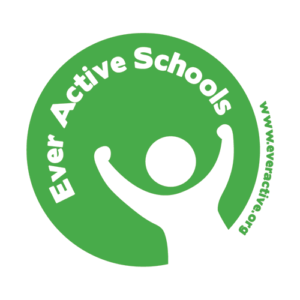
Grade: K-4
Subjects: Math, Language, Art
Teaching Strategies: Place based learning, Collaborative learning
Check out this resource from Ever Active! You will have fun outside with your learners finding colours in nature and doing journaling or math graphing activities afterwards!
Spotlight on a Species
Grade: 5-8
Subjects: Science, Language, Art
Teaching Strategies: Experiential research, Place based learning
Change of context! Enlist students as “urban naturalists” who have been hired to teach people in their human community about the animals and insects also inhabiting the place. They will need show what they know about a local species. So, students will adopt a species and prepare to indicate what is unique about the animal/insect.
- They might design a trading card about it.
- They might create a pamphlet nominating this species for a local award or recognition—how is this being an unsung hero?
- As an imaginative extension activity students could be asked to invent a species and describe its predators, prey, food, habitat, habits etc
Explore more general K-12 Imaginative Ecological Learning Activities here!
Inspiring Eco-Action through Storytelling
Subjects: Science, Language, Art, Phys Ed
Teaching Strategies: Experiential learning, Place based learning
In this activity from Earth Rangers, storytelling helps spur Eco-Action by showing students that it is possible to make a difference. After identifying what is needed to drive change and the skills they have that can help, the students will begin to contribute to positive change by sharing messages of hope with others. An Earth Rangers research study about Eco-Anxiety in kids and their parents identified 5 E’s to drive eco-action: empathy, education, environmental stewardship, excitement, and empowerment. Sharing stories of change is one way of applying these 5 E’s.
Click here for this resource on Inspiring Eco-Action through Storytelling and find more great outdoor learning resources at the Earth Rangers Homeroom site.
Nature Charades
Grade: K-6
Subjects: Drama, Language, Art 
Teaching Strategies: Place based learning, experiential, hands on learning
Check out this Nature Charades resource from Ever Active! Your learners will love getting to create their own nature charades cards and play this game with their classmates!
Map It
Grade: 9-12
Subjects: Geography, Language, Civics
Teaching Strategies: Critical thinking, outdoor learning, place based learning 
Spend time exploring the idea of mapping in one block beyond school grounds. Begin by creating quadrants around the school for different groups of students—as a final activity, maps of each quadrant can be layered and combined.
- In pairs ask students to explore the assigned area and record on a map what they see. When they come back, have them compare what made it on their map with what other pairs recorded. Have the students discuss what features matter (i.e. important buildings, unique trees, and so on) and, thus, were mapped. What was left off both maps?
- There are many variations to this activity. For example, students can discuss the visibility of their map (what perspective does it represent? How might a different being see the same area? Students could be asked to map a smaller area [e.g. small patch of the schoolyard] from the perspective of a snail or other small creature. What makes it on the map?). They could also map sounds, or, with some research, map what is underground (What can’t we physically see beneath our feet?).
Explore more secondary Imaginative Ecological Learning Activities here!
School Garden Basics
Grade: K-12
Subjects: Science, Language, Art, Phys Ed
Teaching Strategies: Experiential learning, Place based learning
This School Garden Basics resources archive offers tips for creating and sustaining your school garden, how to build a bug hotel, how to plant butterfly and rainbow gardens and more. Support your school’s greening movement with these great resources from Megan Zeni.
Grade: 7-12
Subjects: Science and Geography
Teaching Strategies: Active learning, Reflective Learning
Ask the participants to stand in a circle. Give the end of the string to the participant that answers the first question: Where does all the energy in the world come from? Whoever answers “the sun“, gets the ball of wool, holds onto it and hands the ball to the person that answers the question.
What makes all its food from the light of the sun? Whoever answers plants,(or any specific plant) gets the ball of wool. What eats flowers, grass etc? When someone mentions an animal, then you hand them a piece of wool – essentially linking them to each other. Try and take answers from people on either ends to get the wool overlapping and create a good web effect. Then ask what eats the animal mentioned and continue on asking questions to create a description of a working
ecosystem – Now you have an ecology web! Next use a realistic example to illustrate the knock on impacts of removing one part of the ecosystem. For example, a school group came to this field for a visit and picked all the wild flowers. Anyone who is a flower must sit on the ground and bring their string with them. Anyone who feels a pull on this string
must also sit down because that means this is the food they eat so they will not survive. Eventually everyone should be sitting on the ground.
Processing questions:
• How can humans negatively affect the ecosystem?
• Are there things we can change today to minimize our impact?
• Is there anything happening locally that is impacting the ecosystem?
Tips:
• Hand out cards with animals and plants already printed.
• Get the group to think of things happening locally that impact the ecosystem.
For more resources concerning environmental education, visit leavenotracecanada.ca
Grade: 4-8
Subjects: Science and Geography
Teaching Strategies: Active learning, Reflective Learning
Lay seven cards on the ground in front of the group with a different principle on each. Start reading out statements. Find the 7 principles here.
Have the groups guess the correct principle by moving to and standing beside the principle they feel the statement relates most closely to. Continue until you feel the group have a greater under-standing and awareness of the Leave No Trace principles.
Processing Questions
• Was it always clear which principle the statements related to?
• Did certain statements apply to a number of principles?
• Can participants think of their own statements that could apply to Leave no Trace?
• Are any of the principles more relevant to this group and locality?
• Were the group surprised by any of the statements?
For more resources concerning environmental education, visit leavenotracecanada.ca
Citizen Science and Photography
Grade: 7-12
Subjects: English/Language arts, Geography, Phys. Ed, Science
Teaching Strategies: Constructive Learning, Outdoor Learning, 21st Century Learning
Have students bring their personal devices such as a cell phone with them on a walk around school grounds or the community. Instruct students to take pictures of anything that strikes them in a positive or negative way, through the lens of our relationship with nature.
If bringing student devices is not possible, bring your own device and ask students to tell you what to take pictures of.
Coming back to class, deconstruct these photos. Allow students to reflect on why this photo struck them, and how it connects to our relationship with nature.
Encourage students to study the science behind the photo (ex. If a photo of litter was taken, students may want to research how pollution effects the environment, the rates of different kinds of pollution, etc)
Have students post their photo on a collective platform, such as Google Jam-board. Begin a discussion looking at all the photos that the students had taken on their walk, and reflect on our relationship with nature (both positive and negative reflections).
Alternatively, you can print out each photo and set up different stations around the class and construct an “art show” view of each photo, were students visit each station and discuss the photo with the photographer.
Grades: ANY
Subjects: Interdisciplinary
Teaching Strategies: Outdoor Learning
Take your students outside. Bring writing materials like a piece of paper or journal and a pencil. Have students first LOOK around them and record what they see on their piece of paper. This could be done through a lens of any subject (i.e. what type of biodiversity do you see? What type of physical landscape do you see?). Visit this place frequently (over the course of a week or longer) so students can keep track of their recordings and measure any differences of that outdoor space. At the end of the week, have students compare their findings and asked what they recorded. Begin a class discussion with their findings. to see this activity in more detail!
